A smoke-free policy can apply to several different spaces on a condominium property, including inside individual units, on patios, balconies and in outdoor recreational spaces. Some smoke-free policies designate one or two specific outdoor spaces where smoking is allowed, or they may require people to leave property grounds altogether before lighting up.
When determining which areas will be included in your smoke-free policy, consider the size of your property and the way it is used. If you have logged resident complaints about second-hand smoke exposure, consider the spaces that would need to be addressed to mitigate those issues. If possible, keep designated smoking areas away from recreational spaces that are meant for all residents to enjoy.
It is also important when developing a smoke-free policy to ensure it aligns with the requirements of current tobacco-control legislation. The Alberta Tobacco and Smoking Reduction Act prohibits smoking in any structure or other enclosed common area of a multi-unit residential facility to which members of the public have access, including common patios, pools, other recreation areas and enclosed parking garages. The Act also prohibits smoking within five meters of a doorway, air intake or window that can be opened. Designated smoking areas should not infringe upon spaces designated as smoke-free by law.
If designated smoking areas are included in your smoke-free policy, have signage indicating that the area is a smoking area and have a clearly marked ashtray to safely dispose of butts in order to discourage litter and avoid fires. Conversely, remove any ashtrays currently located in spaces where smoking is banned to minimize confusion.




